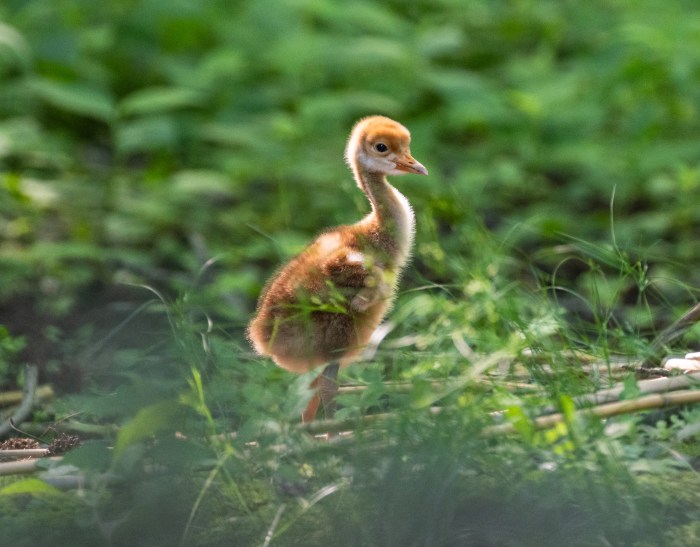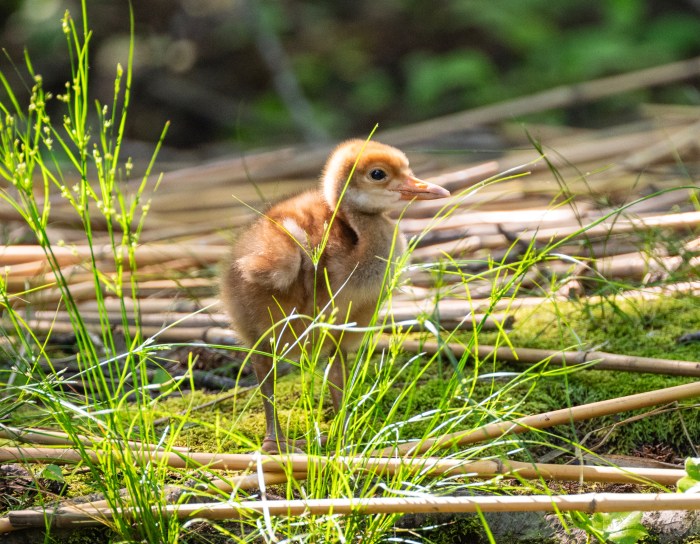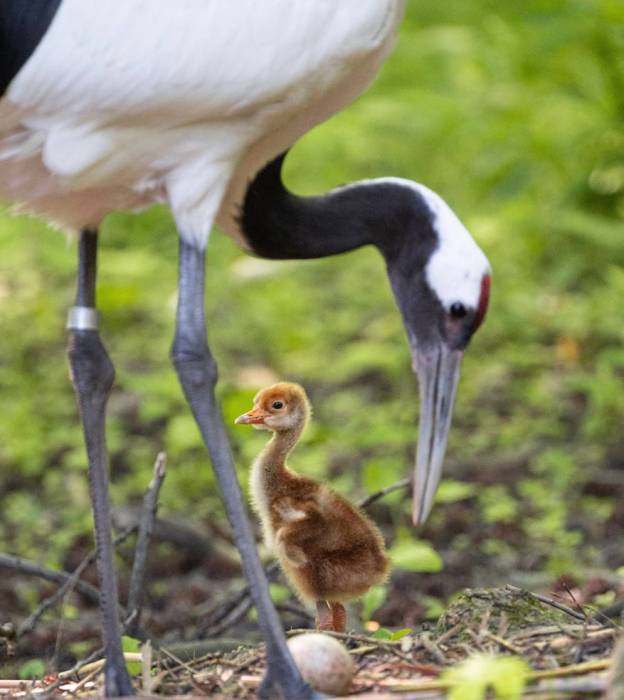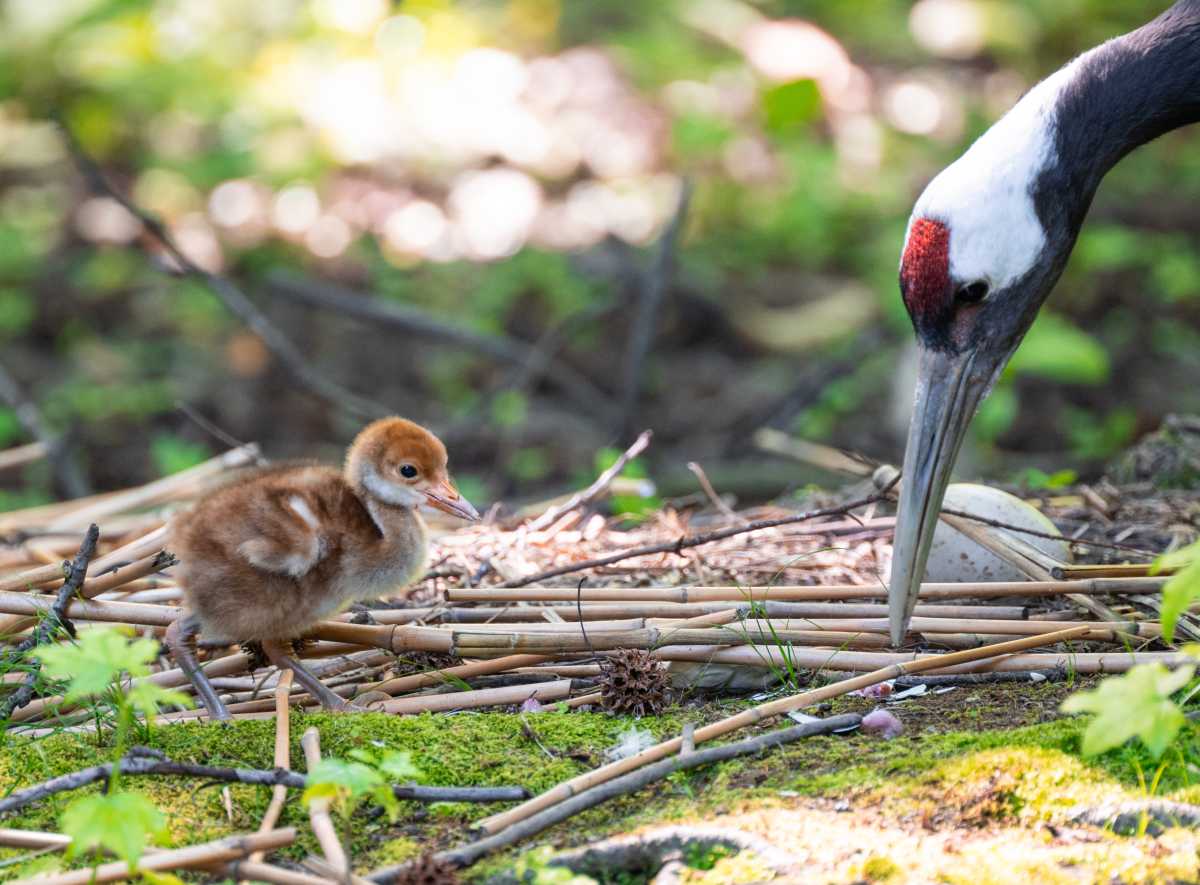The Bronx Zoo is debuting red-crowned cranes—also known as the Japanese crane or Manchurian crane—among the largest and most threatened crane species in the world.
Zoo attendees can now see a baby red-crowned crane, hatched on June 8, at the Northern Ponds. The zoo is breeding this species as part of a Species Survival Plan from the Association of Zoos and Aquariums, which is meant to help ensure a genetically diverse population of red-crowned cranes.
The zoo now has three red-crowned cranes.

Red-crowned crane pairs are considered to be monogamous. The average adult weighs between 15 and 22 pounds, but they often get heavier in the winter. At five feet tall and with a wingspan of up to eight feet, the red-crowned crane is one of the largest crane species in the world.

Adult red-crowned cranes have snowy white body plumage and a black face and neck. The top of their heads has a red patch of bare skin, which is how they got their common name. While males and females have the same colors, males are usually slightly larger.

Association of Zoos and Aquariums facilities currently house approximately 100 red-crowned cranes around the world, with one-third of these birds being in Asian facilities. With an estimated wild population of less than 2,500, the red-crowned crane is listed as “Vulnerable” by the International Union for Conservation of Nature.
Wild red-crowned cranes can be found in northern Japan, northeast China, eastern Mongolia and southeast Russia. During the winter, they may also be spotted in Korea or eastern China. Across their native ranges, the red-crowned cranes are considered by locals to be symbols of good fortune, longevity and peace.
Among the biggest factors contributing to its dwindling population are residential and commercial development, pollution, human intrusion, hunting and trapping, and agriculture.
























